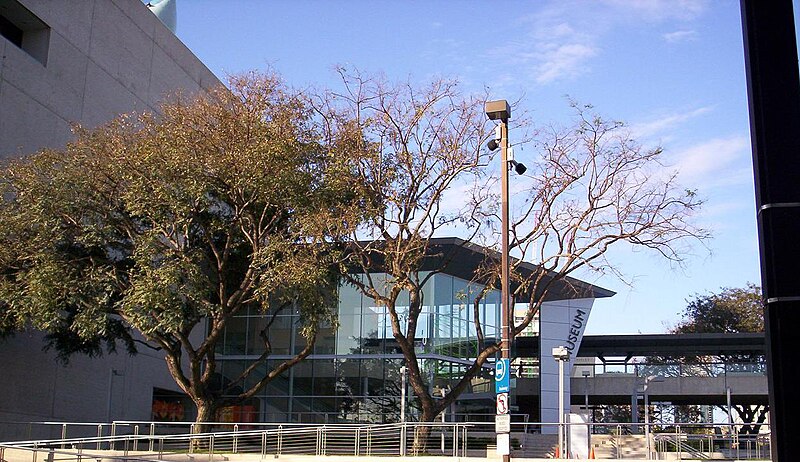Queensland Museum
The Queensland Museum is the state museum of Queensland. The museum currently operates four separate campuses; at South Brisbane, Ipswich, Toowoomba and Townsville.
The museum is funded by the State Government of Queensland.

Queensland Museum
History
The Queensland Museum was founded by the Queensland Philosophical Society on 20 January, 1862, one of the principal founders being Charles Coxen, and had several temporary homes in Brisbane, Queensland, Australia. The temporary homes included: The Old Windmill (1862–1869), Parliament House (1869–1873) and the General Post Office (1873–1879). The first professional curator was Karl Theodor Staiger.
The Queensland Government built a home for the Museum in William Street (later called the John Oxley State Library), with Queensland Museum moving there in 1879. The museum occupied the William Street location for 20 years.

The Old Windmill in Wickham Terrace
(Queensland Museum's first home)
In 1899, the Queensland Museum moved into the Exhibition Hall (now called the Old Museum), on Gregory Terrace in the Brisbane suburb of Bowen Hills, remaining there for 86 years.
In 1986, the Queensland Museum moved to the Queensland Cultural Centre at South Bank, where the museum is adjacent to the Queensland Art Gallery.
Museum Network
Queensland Museum South Bank
Queensland Museum South Bank and the Sciencentre are closed for renovations and plan to reopen after Christmas 2011 in time for the 150th anniversary celebrations in January 2012.
Queensland Museum South Bank is located at the heart of Brisbane’s cultural precinct alongside the State Library of Queensland, the Queensland Art Gallery, the Gallery of Modern Art and the Queensland Performing Arts Centre.
The largest and oldest campus of the Queensland Museum network, Queensland Museum South Bank aims to connect visitors to Queensland, its people and their stories of the past, present and future.
Popular exhibitions include ENERGEX Playasaurus Place, Inquiry Centre and Dandiiri Maiwar.

cnr. William Street and Elizabeth Street, Brisbane — (opposite Queens Gardens)
Sciencentre
The Sciencentre, a project of the Queensland Museum, was relocated from the former Government Printing Office building on George Street to a South Bank site in 2004.
The Sciencentre aims to reveal the science and technology behind our everyday lives.
The Workshops Rail Museum
The Workshops Rail Museum includes more than 15 exhibits for visitors to discover the enormous impact rail has had on Queensland.
In 2011 The Workshops Rail Museum set a new world record with the longest ever toy train track and has been registered with the Guinness Book of World Records.
the Old Museum Building in Gregory Terrace, Bowen Hills
Cobb+Co Museum
In 1987, when the Queensland Museum required more room to display its horse-drawn coaches and carriages, the museum opened its Cobb & Co Museum campus in Toowoomba, Queensland.
Cobb+Co Museum is home to the National Carriage Collection. The museum's collection includes examples of a vast range of vehicles from the horse-drawn era, from farm wagons and delivery carts to the Rolls Royce of Carriages, the landau.
Cobb+Co Museum run a heritage workshops program. Workshops include blacksmithing, silversmithing, leadlighting and leatherwork.

Queensland Museum (1986–present), a part of the Queensland Cultural Centre. A pedestrian bridge, linking the museum and the Queensland Art Gallery to the Queensland Performing Arts Centre, and also to lifts to platforms at the Cultural Centre Busway Station, can be seen on the right.
Museum of Tropical Queensland
The star attraction is the HMS Pandora gallery. Sent to catch the famous HMS Bounty and her mutinous crew, the Pandora sank off the coast of Cape York in 1791. Hundreds of amazing artefacts have been recovered from the wreck and are on display.
The most popular area for kids is the MindZone, a fun interactive science centre. Other galleries celebrate the rainforest, corals and marine creatures from the deep sea and fossil past.
